When modern HR and people ops teams are designing the employee experience, they like to borrow a technique from product and customer service teams.
The employee life cycle, like the customer life cycle, is used to map out an employee’s journey with an organization.
It starts at the attraction stage, when someone first becomes aware of a brand, and ends when someone leaves an organization.
Here I’ll explain each stage of the employee life cycle in more depth and how you can create a great experience at each stage.
Here we'll cover:
Let’s dive in.
What Is The Employee Life Cycle?
A great way to approach talent management in your organization is to view people's journey through the lens of the employee life cycle model.
Sometimes referred to as the employee journey, the employee life cycle covers six stages of interaction between your employee and your organization: attraction, recruitment, onboarding, development, retention, and offboarding.
It’s a useful method for honing in on different parts of your employee experience, even before they’ve spoken to HR or a hiring manager.
If you put in the time and effort to support your employees in each of the six employee life cycle stages, in return you'll get:
- Higher levels of productivity
- Lower employee turnover
- Reduction in recruitment costs
- A strong employer brand.
As you can no doubt imagine, there are many ways you can improve the experience across the life cycle.
One important thing to mention is that it's much easier to improve something if you know where you're going wrong, which is why talking to your people and gathering feedback is so crucial.
Feedback, combined with HR metrics such as turnover and career advancement opportunities, paints a picture of what life is like for people across your organization.
You can then use this data alongside employee experience software to create new initiatives that improve the employee experience and boost organizational performance.
Stages Of The Employee Life Cycle
The employee life cycle is split into six stages:
- Attraction—how you're perceived as an employer
- Recruitment—your recruitment process e.g. candidate sourcing and interviewing
- Onboarding—getting a new team member off to the best possible start
- Development—the growth, progression, and developing opportunities you provide
- Retention—how you look after people and recognize them for their work
- Offboarding—parting ways.
Of course, there exists some overlap between each stage. For example, a great onboarding experience will help increase retention and set new team members off down the right development path.
During each stage of the employee life cycle, recruiting database systems ensure candidate data is stored securely and accessed efficiently across your process.
Now I'll delve a little more into the different phases of the employee life cycle and some areas of focus for each stage.
Stage 1: Attraction—how are you perceived as an employer?

It's likely you know of a few companies people say are great places to work. They treat their employees well and their Glassdoor ratings reflect that.
If an interesting position opens up at such a company, you'd seriously consider applying!
So, while this may be the first stage of a potential new team member's journey with you, a lot of work has gone into crafting your employee experience so that your employer brand is strong.
But maybe you're new and are still building that reputation or, if you've carefully built it, you want to show it off to the world. This means putting yourself out there and getting on the radar of potential employees, otherwise called recruitment marketing.
In a way everything your company does publicly is a form of recruitment marketing. Still, there are certain channels specifically aimed at job seekers you can take advantage of—think job descriptions, careers pages, hiring platforms, and industry events.
These are opportunities to showcase your culture and what you offer as an employer, also called your employer value proposition.
If your current employees feel that your organization is a great place to work, you already have the advantage of good word-of-mouth marketing as they'll recommend your company to friends and family.
Not sure if they would? Ask them.
Send out an employee survey asking how likely people are to recommend your organization to a friend or relative, what their challenges are, and where you're succeeding or could improve.
KPIs to help you meet your goals at the attraction stage:
- Employee net promoter score (eNPS)
- Number of applicants
- Diversity of pipeline
- Employee referrals.
Stage 2: Recruitment—are we a match?

The recruitment stage is when you’re actively hunting talent in the market and, with the help of your trusty ATS, taking them through your recruitment process.
This is about sourcing talent, engaging with them, and creating a great candidate experience overall.
There’s lots to focus on at this stage, but one of the most important is interviews and how to interview someone in an efficient, engaging manner.
Some recruitment metrics to focus on here:
- Recruiter effectiveness: Recruiter effectiveness metrics—screens, outreach
- Candidate net promoter score
- Conversion ratio
- Recruitment funnel speed.
Stage 3: Onboarding—where are we going and how will we get there?

Studies show that organizations with a strong onboarding process improve new hire retention by 82% and productivity by over 70%.
Organizations that take the time to craft proper onboarding experiences, using a 30 60 90 Day Plan and onboarding software, will benefit from new hires getting productive quicker and being more successful in the long term.
Some KPIs to track for onboarding:
- Training completion rate
- New hire turnover
- Onboarding satisfaction.
Stage 4: Development–help them help you

At the development stage, you're supporting your team member through their professional learning and development. This will help them to succeed in their current role and open up the doors for career growth within your organization.
A lot of organizations pay lip service to learning and development without developing a proper L&D strategy or committing the resources required, but it's worth the investment.
It almost goes without saying that providing the right conditions for professional development will increase employee engagement and retention. You're also helping people to be better at their jobs, which in turn helps deliver results.
Some key learning and development metrics to help guide your learning and development programs:
- Business results e.g. higher sales
- Learner behaviors e.g. decreased use of help desk
- Learner knowledge e.g. assessment scores.
Stage 5: Retention–keeping workers healthy and engaged

It’s estimated that turnover can cost between 30%-150% of the employee’s salary, and research presented in the 2022 State of HR report by intelliHR reveals that “36% of HR professionals say employee engagement and performance are a top priority.”
There are multiple ways you can improve employee retention, and it’s not all about salary!
Our research found that employee recognition, wellness and well-being, managers, and growth opportunities all ranked higher than mismatched salaries when it came to people quitting their jobs.
Some key KPIs to track here:
- Employee turnover (can be per team, manager, or demographic)
- Employee engagement
- Average employee tenure.
Stage 6: Offboarding–it doesn’t have to be goodbye

Whether someone is retiring, found a new role, or has personal reasons, the offboarding stage is a great opportunity for you to receive honest feedback on how the company could improve the employee experience for existing and future hires.
You can send surveys or even better, conduct exit interviews to better understand the reasons someone has left and identify areas of improvement across the previous stages.
Some level of attrition is healthy and not everything lasts forever. Like colleges, some companies even invest in alumni networks to further support people throughout their careers.
Using The Employee Life Cycle
I hope that, if you’ve gotten this far, you now think a little differently about what goes into crafting a great employee experience.
Odds are your organization will excel at some elements, but there will inevitably be room for improvement in others.
Perhaps a next step would be getting some feedback from employees about how they feel about the onboarding process or growth opportunities.
Collecting and acting upon regular feedback is key to improving the employee experience and is closely tied to a people operations way of thinking (pioneered by Google and other forward-thinking organizations).


